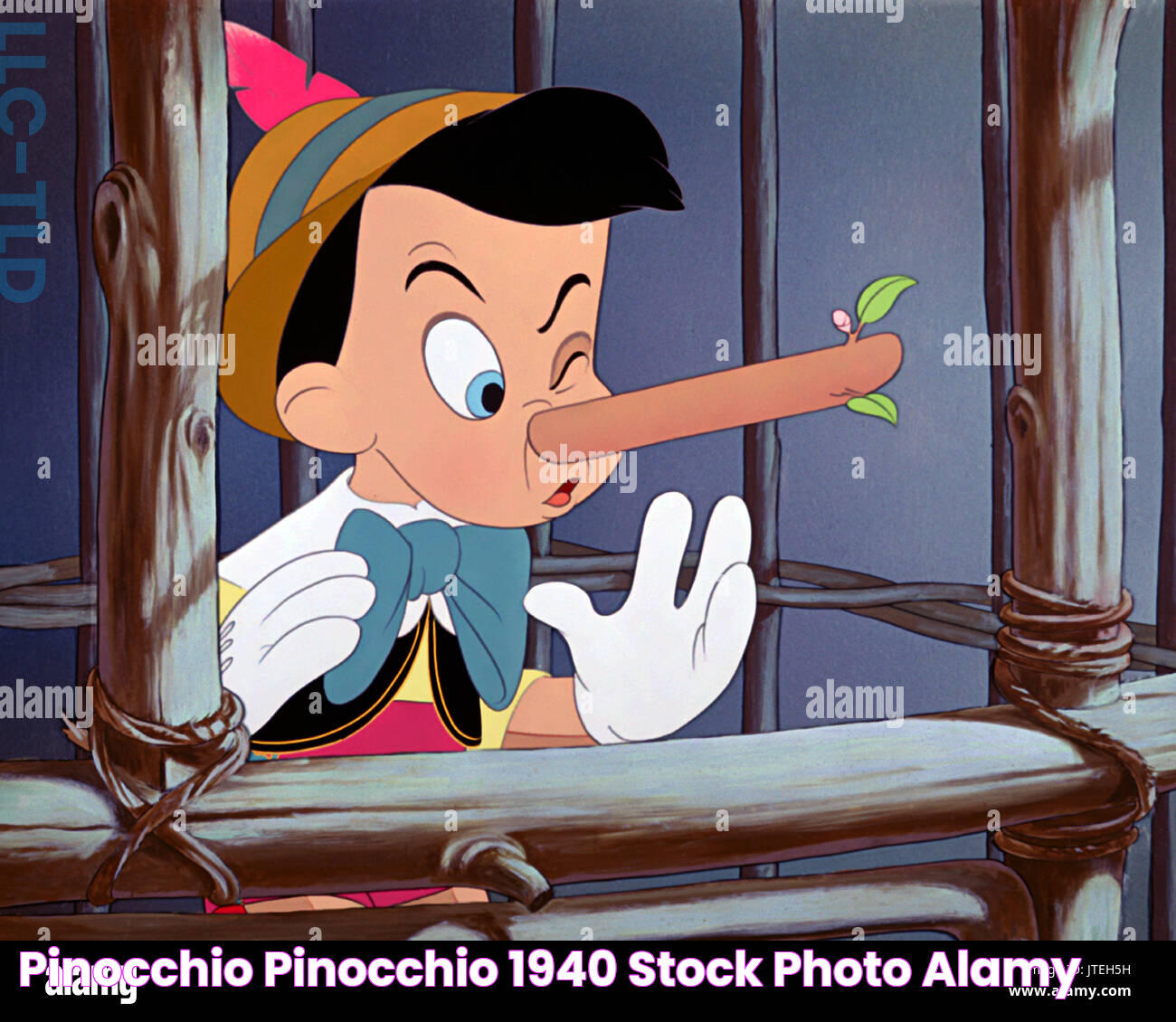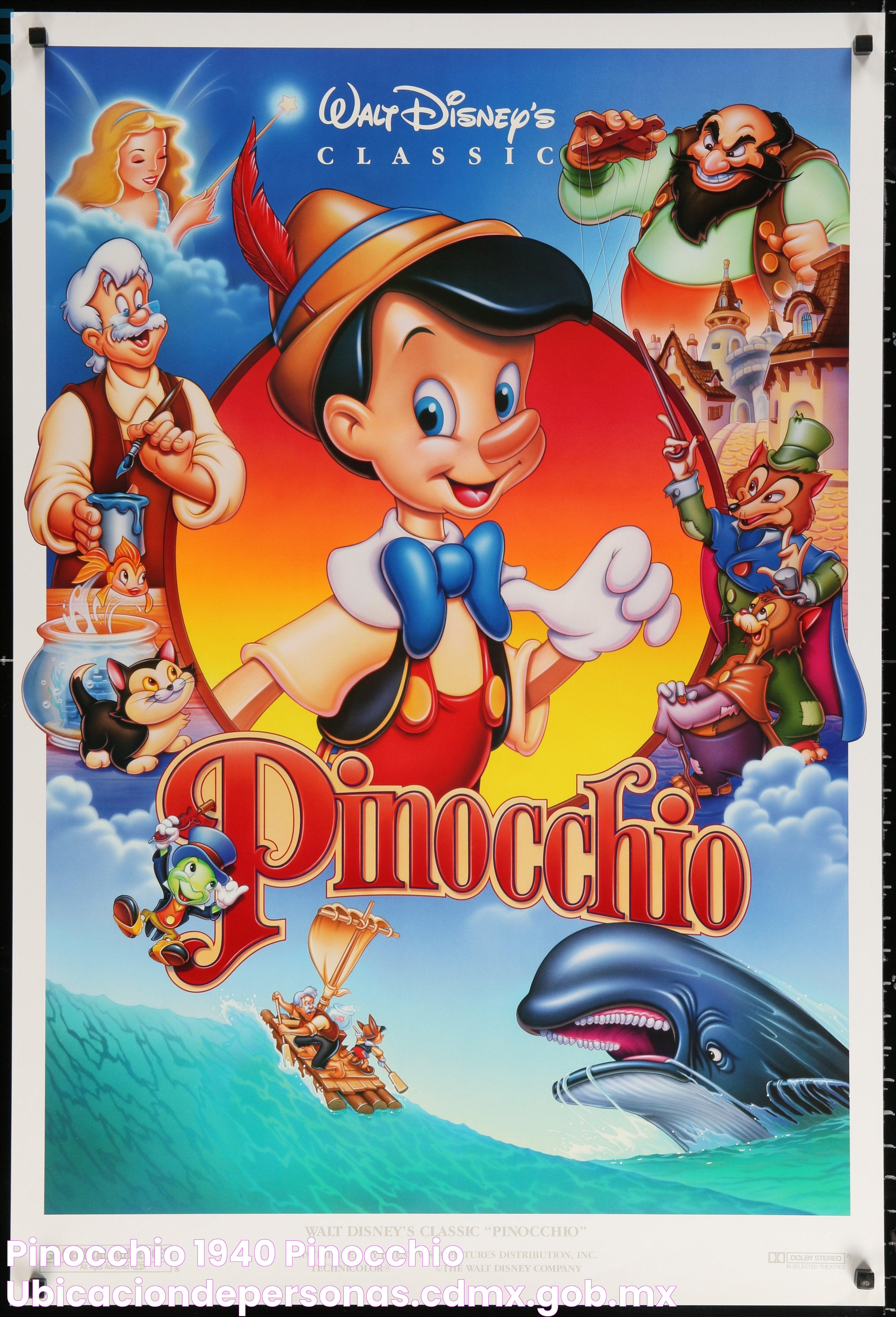The tale of Pinocchio has been a beloved story for generations, capturing the hearts of children and adults alike. The 1940 release of Walt Disney's animated film "Pinocchio" marked a significant milestone in the history of animation and storytelling. Released on February 7, 1940, this classic film has continued to enchant audiences worldwide with its timeless themes and pioneering animation techniques.
Pinocchio's release in 1940 was a landmark event that showcased the burgeoning art of animation. Following the success of Disney's first full-length animated feature, "Snow White and the Seven Dwarfs," Pinocchio set new standards for storytelling and visual artistry. The film brought to life Carlo Collodi's 1883 novel "The Adventures of Pinocchio," transforming it into a cinematic experience filled with memorable characters and moral lessons.
As we reflect on the significance of the Pinocchio 1940 release date, it's important to understand the context in which this film was produced. The early 20th century was a time of rapid technological advancement, and Disney's innovative use of animation techniques helped to revolutionize the film industry. Pinocchio's release pushed the boundaries of what was possible in animation, combining groundbreaking visuals with an engaging narrative that resonated with audiences around the world.
Read also:Apple Earnings A Closer Look At The Financial Powerhouse
Table of Contents
- Biography of Pinocchio
- The Making of Pinocchio
- What Made Pinocchio Unique?
- Pinocchio 1940 Influences
- Pinocchio 1940 Release Date Significance
- Animation Techniques of Pinocchio
- Characters and Their Development
- The Music of Pinocchio
- How Did Pinocchio Impact Culture?
- Pinocchio Merchandising and Legacy
- What Lessons Does Pinocchio Teach?
- Pinocchio's Reception Over the Years
- Pinocchio 1940 Today
- Frequently Asked Questions
- Conclusion
Biography of Pinocchio
The character of Pinocchio originates from the Italian children's novel "The Adventures of Pinocchio" by Carlo Collodi, first published in 1883. Pinocchio is a wooden puppet brought to life by a toymaker named Geppetto. The story follows Pinocchio's adventures as he learns about honesty, bravery, and selflessness.
| Character Name | Pinocchio |
|---|---|
| Created By | Carlo Collodi |
| First Appearance | "The Adventures of Pinocchio" (1883) |
| Film Debut | Pinocchio (1940) |
| Traits | Curious, Naive, Eager to Learn |
| Goals | To Become a Real Boy |
The Making of Pinocchio
Creating Pinocchio was no small feat. Walt Disney and his team of animators and storytellers faced numerous challenges in bringing this story to the big screen. The process involved meticulous planning, innovative techniques, and a dedication to capturing the essence of Collodi's original work. Disney's commitment to quality and storytelling excellence ensured that Pinocchio would be more than just an animated film; it would become a timeless classic.
What Made Pinocchio Unique?
Pinocchio stood out for several reasons. It was one of the first films to use multi-plane cameras, which added depth and dimension to the animation. The characters were richly developed, each with distinct personalities and roles that contributed to the story's moral lessons. Moreover, the film's narrative structure was groundbreaking, weaving together themes of personal growth, responsibility, and redemption.
Pinocchio 1940 Influences
The 1940 release of Pinocchio was influenced by various cultural and historical factors. The Great Depression had a profound impact on the entertainment industry, leading to a demand for uplifting and inspiring stories. Pinocchio served as an allegory for overcoming adversity and striving for personal betterment, resonating with audiences of the time.
Pinocchio 1940 Release Date Significance?
The release date of February 7, 1940, was significant because it marked Disney's commitment to creating high-quality animated features that could stand alongside live-action films. Pinocchio's success paved the way for future animated classics and demonstrated the potential of animation as a powerful storytelling medium.
Animation Techniques of Pinocchio
Pinocchio was a technical marvel for its time. Disney's use of the multi-plane camera allowed animators to create scenes with depth and realism. This technique involved stacking several layers of artwork and moving them at different speeds to simulate a three-dimensional effect. Additionally, the animators employed rotoscoping to capture realistic human movements, enhancing the film's believability.
Read also:Mo Netflix A Dive Into The Streaming Giants Influence And Evolution
Characters and Their Development
The characters in Pinocchio played crucial roles in conveying the film's themes. Geppetto, the kind-hearted toymaker, symbolizes parental love and guidance. Jiminy Cricket, Pinocchio's conscience, represents the moral compass that guides Pinocchio on his journey. The Blue Fairy embodies hope and transformation, providing Pinocchio with the opportunity to become a real boy.
The Music of Pinocchio
The music of Pinocchio is an integral part of its charm and success. The film's score, composed by Leigh Harline and Ned Washington, includes the iconic song "When You Wish Upon a Star." This song became synonymous with Disney's brand and encapsulates the film's themes of dreams and perseverance. The music enhances the emotional depth of the story, creating a memorable cinematic experience.
How Did Pinocchio Impact Culture?
Pinocchio's impact on culture is undeniable. It introduced audiences to the idea of animated films as serious art forms and contributed to the growth of the animation industry. The film's themes of honesty and integrity have resonated with generations, making Pinocchio a cultural touchstone. Its influence extends beyond cinema, inspiring adaptations, merchandise, and references in popular culture.
Pinocchio Merchandising and Legacy
The success of Pinocchio led to a wide range of merchandise, including toys, books, and clothing. The film's characters became iconic symbols associated with Disney, cementing their place in the company's legacy. Pinocchio's influence can be seen in Disney's continued dedication to storytelling and innovation, ensuring that the film's legacy endures for future generations.
What Lessons Does Pinocchio Teach?
Pinocchio teaches valuable lessons about honesty, responsibility, and personal growth. The story emphasizes the importance of listening to one's conscience and making moral choices. Pinocchio's journey from a naive puppet to a real boy illustrates the transformative power of self-discovery and the rewards of perseverance.
Pinocchio's Reception Over the Years
Pinocchio has been well-received by audiences and critics since its release. Initially, the film faced financial challenges due to the outbreak of World War II, but it eventually gained recognition for its artistic achievements and storytelling excellence. Today, Pinocchio is celebrated as one of Disney's finest works, and its influence can be seen in the company's continued success.
Pinocchio 1940 Today
Even decades after its release, Pinocchio remains a beloved classic. The film's themes and characters continue to resonate with audiences, making it a timeless story of growth and redemption. Pinocchio's legacy lives on through various adaptations and reimaginings, ensuring that new generations can experience the magic of this iconic film.
Frequently Asked Questions
- When was Pinocchio released? - Pinocchio was released on February 7, 1940.
- Who directed Pinocchio? - Pinocchio was directed by Ben Sharpsteen and Hamilton Luske.
- What is the main theme of Pinocchio? - The main theme of Pinocchio is the moral journey of honesty, integrity, and personal growth.
- How was the animation in Pinocchio groundbreaking? - The animation in Pinocchio was groundbreaking due to the use of the multi-plane camera and rotoscoping techniques.
- What song from Pinocchio became iconic? - The song "When You Wish Upon a Star" from Pinocchio became iconic.
- How has Pinocchio influenced popular culture? - Pinocchio has influenced popular culture through its themes, characters, and contributions to the animation industry.
Conclusion
The release of Pinocchio in 1940 was a monumental event in the history of animation and cinema. This timeless tale of adventure and self-discovery continues to captivate audiences and inspire filmmakers. As we reflect on the significance of the Pinocchio 1940 release date, we are reminded of the enduring power of storytelling and the impact of Disney's pioneering spirit. Pinocchio remains a beloved classic, ensuring that its legacy will endure for generations to come.

